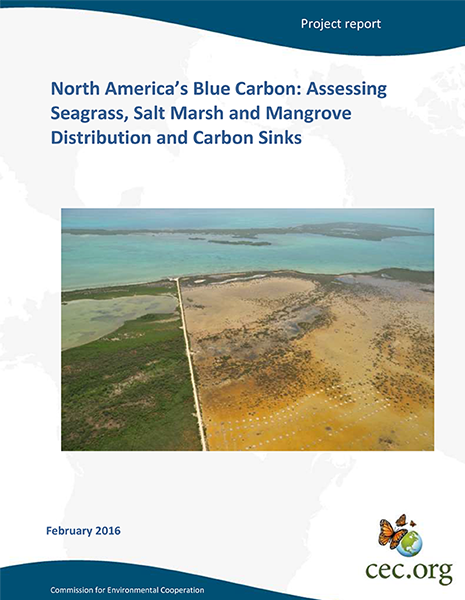North America’s Blue Carbon: Assessing Seagrass, Salt Marsh and Mangrove Distribution and Carbon Sinks
North America’s Blue Carbon: Assessing Seagrass, Salt Marsh and Mangrove Distribution and Carbon Sinks
Description
Blue carbon denotes the long-term storage of carbon within plant habitats growing in coastal lands and near-shore marine environments. North American blue carbon habitats—seagrass, salt marsh, and mangrove—were assessed to determine their spatial distribution and to document these sinks of blue carbon. Maps of habitat distributions on the coasts of Canada, Mexico and the United States were collected, verified and compiled to create the first continent-wide areal assessment of blue carbon.
The maps show that seagrasses grow coastally throughout North America while mangroves are primarily tropical and salt marshes primarily temperate/arctic. A geodatabase was established, metadata were documented, and data and methodological gaps were assessed along with challenges in identifying the extent of these habitats. The maps compiled for North America document 24,200 square kilometers (km2)ofseagrass, 13,500 km2 of salt marsh and 10,100 km2 of mangrove. Only half of the continent’s seagrasses have been mapped; priority sites were identified for future mapping. Salt marsh mapping is incomplete for parts of Canada and Mexico. The area of blue carbon habitat within marine protected areas and terrestrial protected areas was determined.
Additional Information
